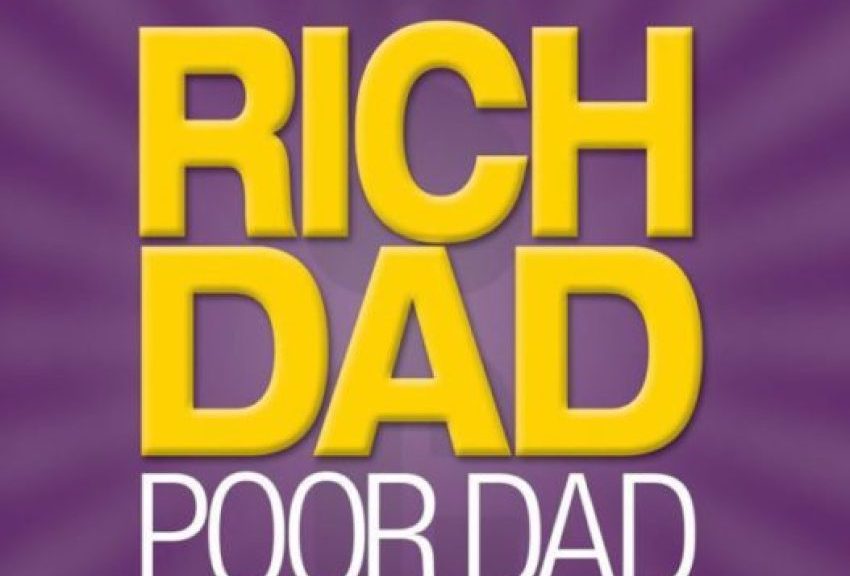
Book Review: Rich Dad Poor Dad – Robert Kiyosaki
Rich Dad Poor Dad was the first personal finance book I read, it also happens to be one of the most popular personal finance books ever written, having sold 32 million copies (at the time of publishing this article).
In the book author Robert Kiyosaki recounts the entertaining stories from his childhood, right through to adulthood and along the way points to the lessons from his two ‘Dads’. The two ‘Dads’ being his Rich Dad, who is actually his friends father and his Poor Dad, who is his real father.
The stories are quite entertaining and fun to read, particularly the stories from his childhood learning from his Rich Dad. From setting up a highly successful comic book library from his parents basement to getting put to work for free in one of his Rich Dads stores.
Whilst Robert provides 6 lessons (listed below) the book is not exactly an instructional style finance book, rather it is more about driving home the importance of mindset in wealth creation.
-
The rich don’t work for money
-
The importance of financial literacy
-
Minding your own business
-
Taxes and corporations
-
The rich invent money
-
The need to work to learn and not to work for money
In the book his friend’s father, the “Rich Dad”, takes him under his wing at a young age and helps him understand business and how to become wealthy. During this education from his “Rich Dad” he becomes well aware of why his real dad is poor despite being well educated and having a good and stable job.
People tend to have polarising views on the book, some love it and some think it is rubbish. Personally I think, while it is certainly not perfect and there are parts that are quite vague around the “examples” there is certainly a lot of value to be had from Rich Dad Poor Dad, especially around having the correct mindset to become wealthy, how to recover from failure and how to maintain wealth.

Our education system is flawed
Robert very rightly points out that our current education model is designed to produce employees and does not encourage entrepreneurship, highlighting the need for financial literacy to become part of the curriculum.
This is a subject that is very close to my heart, having two kids of my own so I could not agree with this and am personally doing everything I can to ensure my kids grow with a good level of financial literacy.
If nothing else from this book I took away this little tidbit that I use with myself and my kids when considering an expenditure that is not currently within reach, and I wish it is something that I knew sometime ago.
My poor dad said, “I can‘t afford it. My rich dad asked, “How can I afford it?”
This line alone helps shift the mindset from poor to rich.
(I have just purchased Scott Pape’s latest book The Barefoot Investor for Families: The only kids’ money guide you’ll ever need so I have to have a review up shortly.)
What is an Asset?
This is perhaps one of the more polarising views that Robert discusses in his book.
An asset is something that puts money in my pocket. A liability is something that takes money out of my pocket.
In general people consider their home an asset as it grows in value, however Robert’s view is that is actually a liability as it take money from your pocket, even if you have paid it off in full it still takes money from you via maintenance cost and utility costs and it does not produce you any income.
Whilst this does not exactly align with general accounting standard, in order to become financially free you must have income generating assets. There is no use being equity rich and cash poor.
I tend to agree with Robert, this is the view that people should be taking when considering their investments. What good is an investment property that is losing you money? How can it be an asset if it is not putting money in your pocket each month?
Risk
There are points in the book where the Robert does seem to downplay the risk in some of his investment suggestions, which has lead to some criticism. The types of deals that he talks about are also not easily accessible to most people and in some cases may not even be relevant in the current economic climate.
In his defence he does also say that you should not invest in something that you do not fully understand.
In summary, I think this book is an excellent starting point for someone beginning the journey to financial freedom as it does help you to shift your mindset when thinking about money. I have also read Rich Dad’s Cashflow Quadrant which builds on many of the things in this book and I also would recommend.
Thanks for reading.
TSD